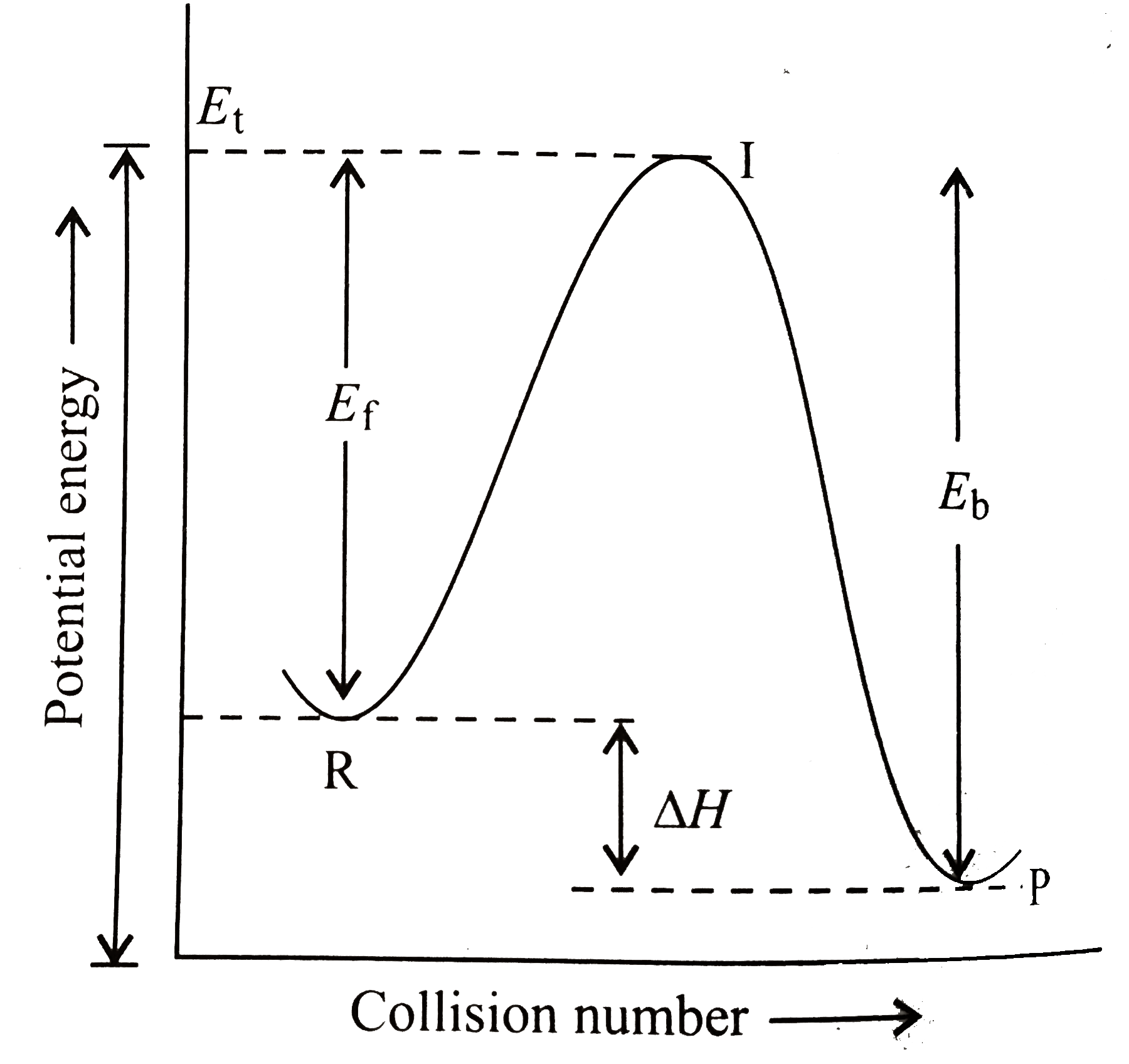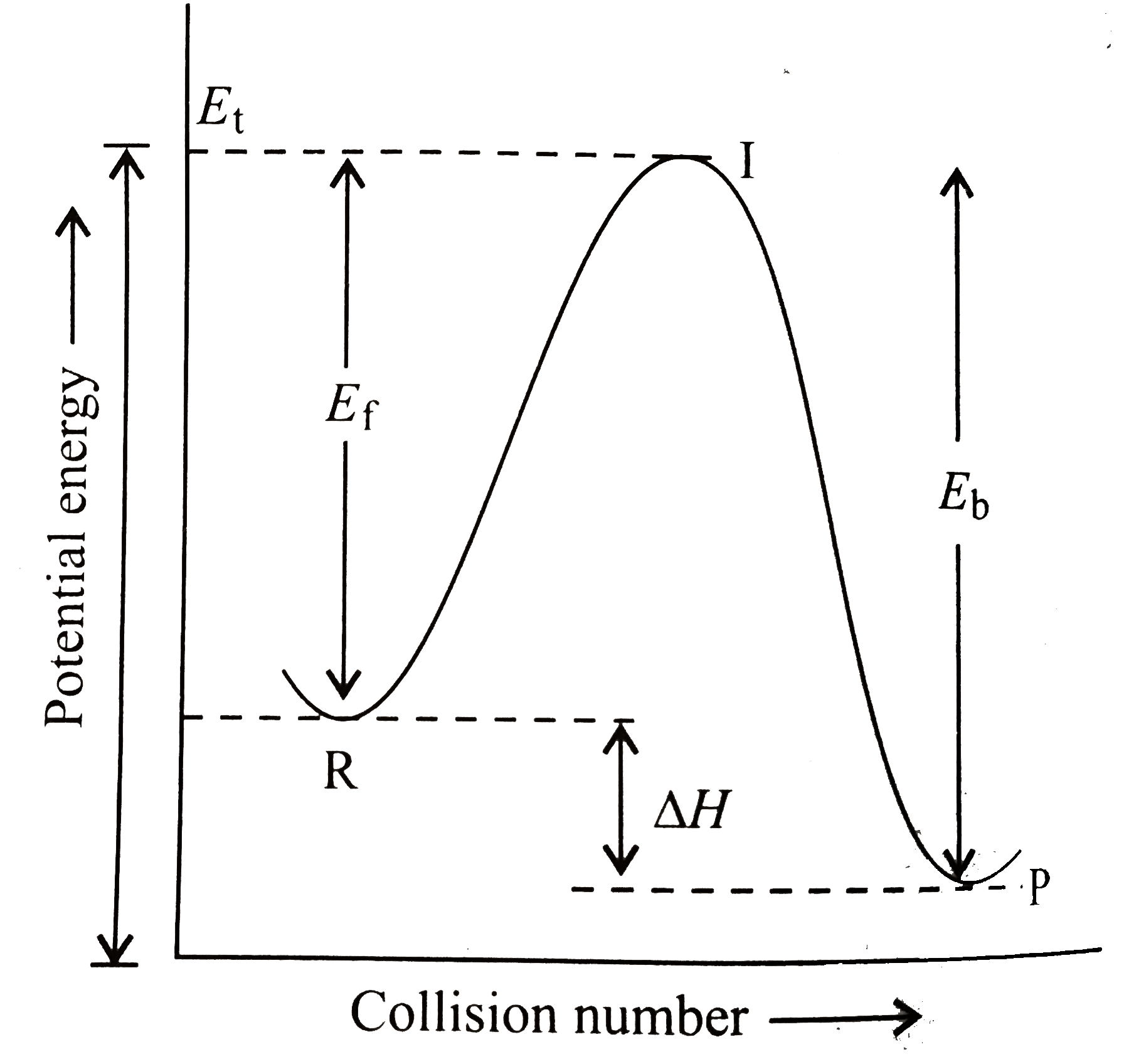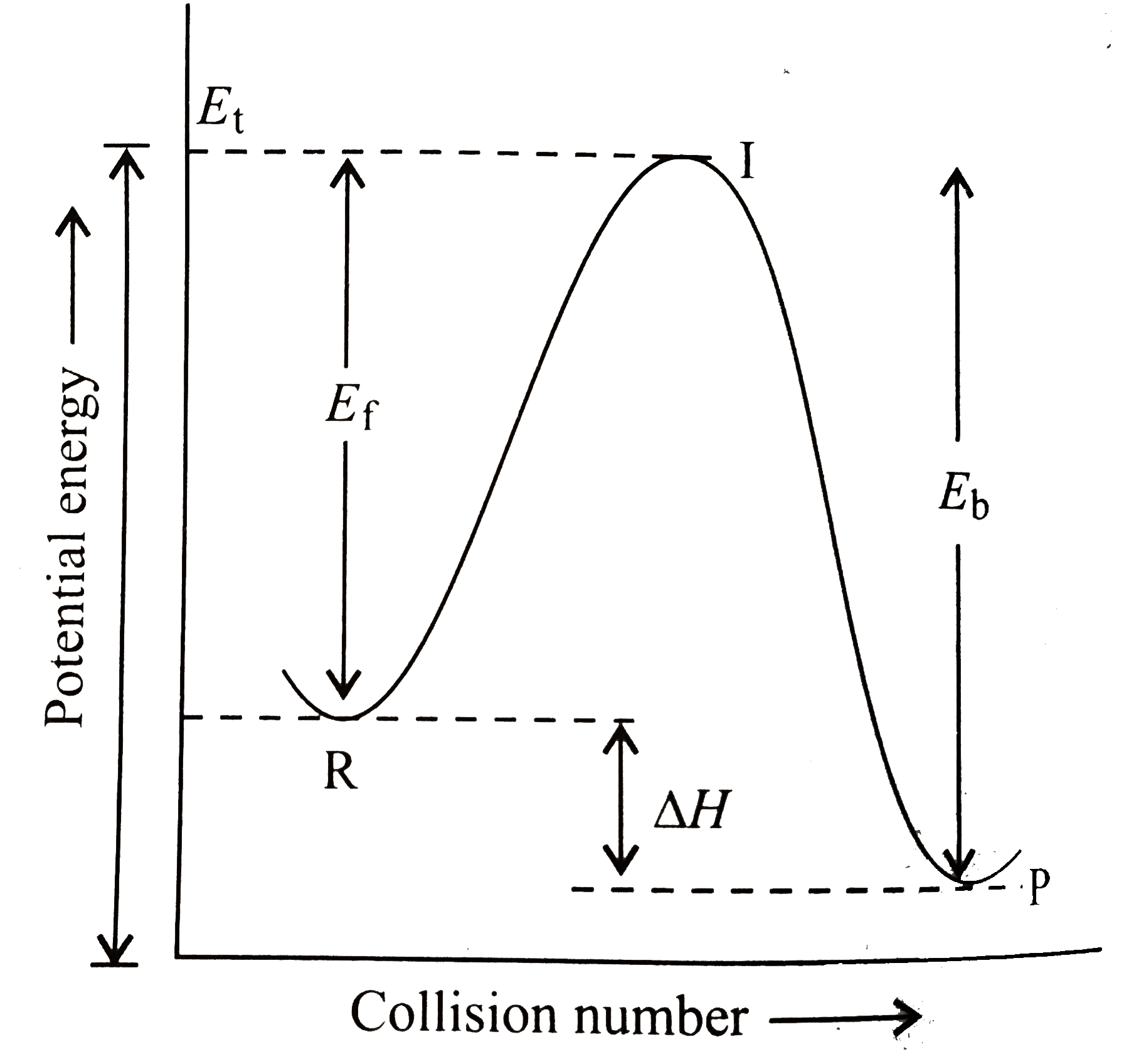The ΔH value for the reaction,
H2+Cl2→2HCl is - 44.12 Kcal
If E1 is the activation energy of the reactants and E, is the activation energy of the products, for the above reaction.Solution in Telugu
E1>E2
E1<E2
E1=E2
ΔH is not related to E1orE2
The correct Answer is:B
In an exothermic reaction, potential energy of product is less when compared to potential energy of reactants. ∴E1<E2
Topper's Solved these Questions
Similar Questions
In which group of the periodic table the element with Z =120 be placed ?
View SolutionWhich of the following statement is correct?
View SolutionA colliison between reactant molecules must occur with a certain minimum energy before it is effective in yielding Product molecules. This minimum energy is called activation energy Ea Large the value of activation energy, smaller the value of rate constant k. Larger is the value of activation energy, greater is the effect of temperature rise on rate constant k.

Ef= Activation energy of forward reaction
Eb= Activation energy of backward reaction
ΔH=Ef−Eb
Ef= threshold energy
If a reaction A+B→C is exothermic to the extent 30kJmol−1 and the forward reaction has an activation energy of 249kJmol−1 the activation energy for reverse reaction in kJmol−1 is
View SolutionA colliison between reactant molecules must occur with a certain minimum energy before it is effective in yielding Product molecules. This minimum energy is called activation energy Ea Large the value of activation energy, smaller the value of rate constant k. Larger is the value of activation energy, greater is the effect of temperature rise on rate constant k.

Ef= Activation energy of forward reaction
Eb= Activation energy of backward reaction
ΔH=Ef−Eb
Ef= threshold energy
For the following reaction at a particular temperature, according to the equations
2N2O5→4NO2+O2
2NO2+12O2→N2O5
The activation energies are E1 and E2, respectively. Then
View SolutionA colliison between reactant molecules must occur with a certain minimum energy before it is effective in yielding Product molecules. This minimum energy is called activation energy Ea Large the value of activation energy, smaller the value of rate constant k. Larger is the value of activation energy, greater is the effect of temperature rise on rate constant k.

Ef= Activation energy of forward reaction
Eb= Activation energy of backward reaction
ΔH=Ef−Eb
Ef= threshold energy
For two reactions, activation energies are Ea1 and Ea2, rate constant are k1 and k2 at the same temperature. If k1>k2, then
View SolutionA colliison between reactant molecules must occur with a certain minimum energy before it is effective in yielding Product molecules. This minimum energy is called activation energy E_(a) Large the value of activation energy, smaller the value of rate constant k . Larger is the value of activation energy, greater is the effect of temperature rise on rate constant k . E_(f) = Activation energy of forward reaction E_(b) = Activation energy of backward reaction Delta H = E_(f) - E_(b) E_(f) = threshold energy The rate constant of a certain reaction is given by k = Ae^(-E_(a)//RT) (where A = Arrhenius constant). Which factor should be lowered so that the rate of reaction may increase?
View SolutionA colliison between reactant molecules must occur with a certain minimum energy before it is effective in yielding Product molecules. This minimum energy is called activation energy E_(a) Large the value of activation energy, smaller the value of rate constant k . Larger is the value of activation energy, greater is the effect of temperature rise on rate constant k . E_(f) = Activation energy of forward reaction E_(b) = Activation energy of backward reaction Delta H = E_(f) - E_(b) E_(f) = threshold energy The activation eneries for forward and backward reactions in a chemical reaction are 30.5 and 45.4 kJ mol^(-1) respectively. The reaction is
View SolutionThe ΔH value of the reaction H2+Cl2⇔2HCl is −44.12 kcal. If E1 is the activation energy of the products then for the above reaction
View SolutionFor an endothermic reaction energy of activation is E_(a) and enthlpy of reaction is Delta H (both in kJ "mol"^(-1) ). Minimum value of E_(a) will be
View Solution
(E=activation energy )
Relation between activation energies os above reactions is:
View SolutionThe DeltaH value of the reaction H_(2) + Cl_(2) hArr 2 HCl is -44.12 kcal . If E_(1) is the activation energy of the products , then for the above reaction
View SolutionFor the exothermic reaction, A+B→C+D.ΔH is the heat of reaction and Ea is the activation energy. The activation energy for the formation of A + B will be
View SolutionFor an endothermic reaction, energy of activation is Ea and enthalpy of reaction is ΔH (both of these in kJ/mol). Minimum value of E will be
View SolutionFor an endothermic reaction energy of activation is E_(a) and enthlpy of reaction is Delta H (both in kJ "mol"^(-1) ). Minimum value of E_(a) will be
View SolutionA colliison between reactant molecules must occur with a certain minimum energy before it is effective in yielding Product molecules. This minimum energy is called activation energy E_(a) Large the value of activation energy, smaller the value of rate constant k . Larger is the value of activation energy, greater is the effect of temperature rise on rate constant k . E_(f) = Activation energy of forward reaction E_(b) = Activation energy of backward reaction Delta H = E_(f) - E_(b) E_(f) = threshold energy If a reaction A + B rarr C is exothermic to the extent 30 kJ mol^(-1) and the forward reaction has an activation energy of 249 kJ mol^(-1) the activation energy for reverse reaction in kJ mol^(-1) is
View Solution
